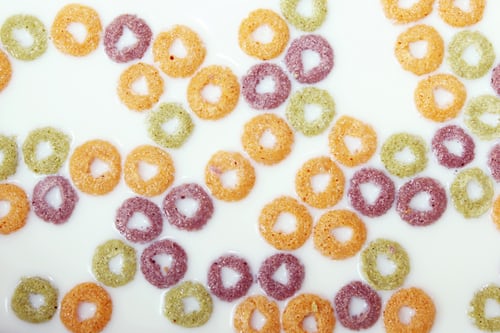Harnessing the power of the ‘Cheerios effect’
You may not be aware of it, but there is some very interesting fluid dynamics going on every morning when you eat your breakfast cereal. A team from Brown University have been exploring the physics of the so-called ‘Cheerios effect’, something which may prove incredibly useful in the design of micro-robots on the water.
What is the ‘Cheerios effect’? It’s named after observing Cheerios in a bowl full of milk – when you are down to just a few bits of cereal, they tend to cluster together in the middle or at the edges of the bowl, rather than randomly dispersing across the milk’s surface. (Go home and try it – it’s strangely satisfying to watch.) The question is why, and despite theoretical work and larger scale experimentation, this Brown study is the first time that the forces governing this interaction have been experimentally measured at the mm/cm scale.
A team from Brown University have been exploring the physics of the so-called ‘Cheerios effect’
Ian Ho, an undergraduate student at Brown and lead author of the research, said: “Despite the fact that this is something we see every day and it’s important for things like self-assembly, no-one had done any experimental measurements at this scale to validate these models. That’s what we were able to do here.”
To understand the Cheerios effect, you need to consider both gravity and surface tension – the tendency of molecules on the surface of a liquid to stick together, forming a thin film – and how the two interact. Small objects (like Cheerios) aren’t heavy enough to break the surface tension of milk, so they float. They do have enough weight, however, to create a small dent in the film. When these dents get close enough together, they fall into each other and merge, forming clusters on the surface – and voila, all the Cheerios are together.
To understand the Cheerios effect, you need to consider both gravity and surface tension
In order to determine the amount of attractive force objects in the size and weight range of a Cheerio have, the team turned to magnetism. As Daniel Harris, an assistant professor in Brown’s School of Engineering, notes, it was necessary to have a non-mechanical way of applying force: “The forces we’re measuring are similar to the weight of a mosquito, so if we’re physically touching these bodies, we’re going to interfere with the way they move.”
The experiment involved two small plastic disks, one of which contained a small magnet. Electrical coils had the magnetised disk and, by measuring the intensity of the field at the instant the disks begin to move away from each other, the researchers determined the amount of attractive force. They also discovered that, as two disks draw close to each other, they also tilt toward each other, thereby ever-so slightly increasing the attractive force. This was not initially predicted in the mathematical model of the interaction, which underestimated the attractive strength when the disks are very close.
The forces we’re measuring are similar to the weight of a mosquito, so if we’re physically touching these bodies, we’re going to interfere with the way they move
This study may seem of tangential relevance, but its potential applications are significant. Say that you build a microscale machine or robot which needs to skitter across the surface of water to do environmental monitoring, for example. If there were multiple machines or if they have two or more legs, it is necessary to understand the kinds of forces that they would encounter – both in their own interactions with the water, and in the forces that they would exert on each other. Although the dynamics that govern how our cereal moves may be fascinating in themselves, the potential uses as we try to monitor the way our world is changing could be game-changing.

Comments